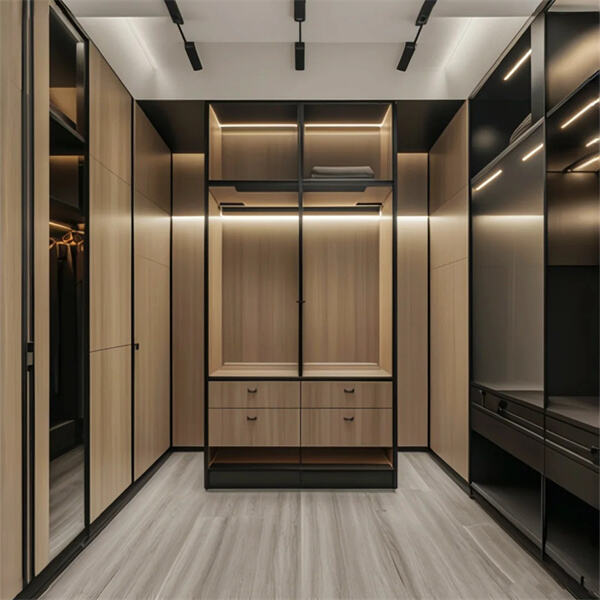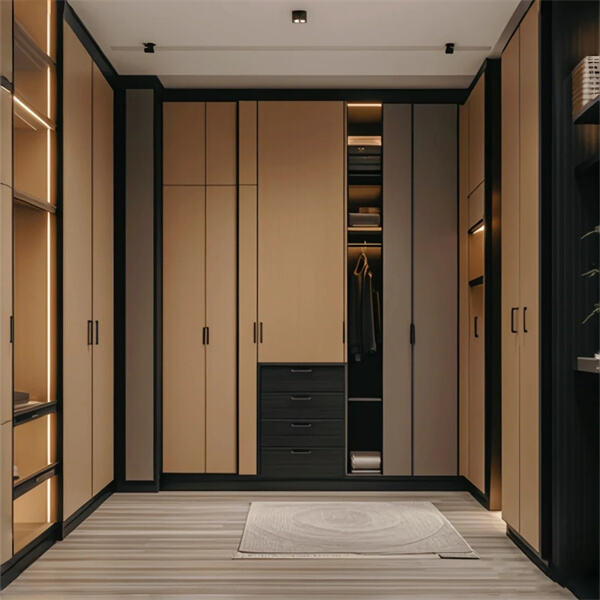ChatGPT אומר:
איך בוחרים את הארון הנכון על פי שטח?
ארון הוא אחד האלמנטים החשובים ביותר בכל בית, וממלמל הן מטרה פונקציונלית והן אסתטית. הוא מספק אחסון לבגדים, נעליים ול악 accessories, וכן תורם לעיצוב הכללי של החדר. עם זאת, בחירת הארון הנכון אינה החלטה אחידה שמתאימה לכל אחד. השטח הזמין מושך תפקיד מרכזי בקביעת הסגנון, הגודל והמבנה של הארון. חדר שינה גדול ומרחיב מאפשר פתרונות ארונות שונים לחלוטין מאלו המתאימים לחדר קטן בדירת מעבר.
המאמר הזה מדבר על כיצד לבחור את הארון הנכון ארון בגדים בהתאם לשטח העומד לרשותך, תוך התחשבות בעיצוב, פונקציונליות, צורכי אחסון ותועלת ארוכת טווח. האם אתה מתחילה את הדירה הקטנה בעיר או הבית הרחב בשכונה פרברית, הבנה כיצד השטח משפיע על ארון בגדים הבחירות שלך תאפשר לך לבצע השקעה חכמה.
למה שטח הוא חשוב בבחירת ארונות
ארונות צריך להיות מעשי מעל לכל דבר אחר, אבל הם גם צריכים להשלים את הפרופורציות של החדר. ארון שמלתים גדול מדי לחדר שינה קטן ימלא את המרחב, ויגרום לו להיות צנוע ופחות יעיל. מצד שני, בחירת ארון שמגדל קטן מדי לחדר שינה גדול עלולה להוביל לבעיות אחסון ולבזבוז פוטנציאל.
המרחב משפיע לא רק על הגודל אלא גם על סוג המלתחה. לדוגמה, ארונות דלתים מגולגות חוסכים שטח ומצוינים מאוד לחדרי הדחיפה, בעוד ארונות דלתות מופעלים דורשים מרחב מרובע נדיב אך מציעים פונקציונליות שאין לה דומה לה. על ידי אישור בחירת המלתחה למרחב שלך, אתה יכול ליצור איזון בין מעשי וסטייל.
מדידת המרחב הזמין
לפני שתבחרו בארון, למדדו היטב את המרחב בו הוא ימוקם. שימו לב לגובה התקרה, לרוחב הקיר ולעמק. השאירו מספיק מקום עבור דלתות, מגירות, ודרכים. בחדרים קטנים, מדידות מדויקות חשובות במיוחד כדי למנוע צפוף.
שקלו איך הארון יתאים לשאר הרהיטים. הארון צריך להשתלב בצורה חלקה עם המיטה, שולחנות הצד או השולחנות בغرفة מבלי להגביל את תנועת ההליכה. גובה התקרה גם הוא משפיע על ההחלטות בעיצוב; ארון גבוהים שמזדחים עד לתקרה מנצלים את המרחב האנכי ופוחתים את הצטברות האבק בחלק העליון.
סוגי ארונות על פי המרחב
ארונות ניידים
ארונות ניידים הם גמישים ומתאימים למרחבים בהם יש צורך בגמישות. הם נפוצים בגדלים ובסגנונות שונים, מה שעושה אותם למתאימים גם לחדרים קטנים וגם לחדרים גדולים. ארון ניידים ניתן להזז או להחליף בקלות, מה שמאפשר התאמה למושכרים או למלאי בתים שמעדכנים לעיתים קרוב את הריהוט הפנימי.
בחדרים קטנים, ארונות ניידים דקים יכולים לספק אחסון חיוני מבלי להכביד על המרחב. בחדרי שינה גדולים יותר, ארונה ניידת גדולה עם תאים מרובים יכולה לשמש כאלמנט מרכזי.
ארונות בuilt-in
ארונות קבע הם אידיאליים למקסום יעילות השטח. הם מותאמים אישית כך שיתאימו לממדים המדויקים של החדר, לרוב הם משתרעים מרצפה לתקרה ומקיר לקיר. ארונות קבע הם מושלמים לחדרים בעלי צורות קשות או למקומות עם נישות ופינות.
בחדרים קטנים, ארונות קבע מפחיתים שטח מובזבז ויכולים להיות מעוצבים עם דלתות מחליקות כדי לחסוך בשטח הדרוש לפתיחת הדלתות. בחדרים גדולים, הם יוצרים מראה חלק ורציף שמשדר תחושת סדר ומשפר את העיצוב הכללי.

ארונות הולכה
ארונות מדים נעים הם אופציה יוקרתית עבור בתים עם שטח רב. הם מספקים אחסון ייעודי לבגדים, נעליים ואקססוריאלים תוך מתן אזור הלבשה. ניתן להתאים את המקומות עם מדפים, מגירות ואורות כדי ליצור סביבה מסודרת ואלגנטית.
אם כי בBedrooms קטנים אין אפשרות לבנות ארונות הליכה, הם מוסיפים ערך ניכר לבתים גדולים. הם הופכים את האחסון לחוויה ומאפשרים מקסימום התאמה אישית.
ארונות פינה
ארונות פינה הם פתרון מצוין לשימוש במקומות לא מנוצלים מספיק. בחדרים קטנים, ארון פינה מספק אחסון נרחב מבלי לתפוס חומה מלאה. בחדרים גדולים יותר, ניתן לשלב אותם עם סוגים אחרים של ארונות כדי ליצור מערכות אחסון מקיפות.
ארונות לבוש עם דלתות מתחלפות
ארונות עם דלתות מחליקות מתאימים במיוחד למרחבים קומפקטיים בהם יש מעט מקום לפתיחת דלתות נעות. הם חוסכים במרחב הרצפה ומאפשרים גישה קלה גם בחדרים צרים. דלתות מחליקות יכולות לכלול גם מראות, אשר עוזרות להחזיר אור ולגרום לחדר להרגיש גדול יותר.
בחדרי שינה רחבים, ארון עם דלתות מחליקות ניתן לתכנון בקנה מידה גדול, תוך איזון בין פונקציונליות למראה חלק וعصרי.
עיצוב עבור מרחבים קטנים
בחדרי שינה קטנים או באpartמנטים, יש למקד את הבחירה של ארון במקסום הפונקציונליות תוך מינימום ניצול של המרחב.
בחרו בארונות עם דלתות זזה כדי לחסוך שטח. בחרו סיים מראות כדי לגרום לחדר להרגיש גדול יותר ובהיר יותר. הקמו מחסן אנכי עם ארונות שמגיעים לתקרה, תוך שימוש בחלקים העליונים עבור חפצים שאתם משתמשים בהם לעתים רחוקות. בחרו בארונות עם מגירות ובתי ארגון כדי לצמצם את הצורך בפריטים נוספים.
התאמה אישית היא מרכיב מרכזי במרחבים קטנים. ארון מותקן לפי מידה עם מדפים מתכווננים, רהיטים שמתמשכים החוצה ואשנויות קומפקטיות מאפשרים לנצל כל אינץ' באופן יעיל.
עיצוב למרחבים גדולים
בחדרי שינה גדולים או אזורים לאיפור, ארון יכול להפוך לאלמנט עיצוב מרכזי. המטרה היא לא רק למקסם את האחסון אלא גם להעצים את האסתטיקה של החדר.
ארונות בגדים גדולים הם הבחירה האולטימטיבית לחללים גדולים, ומספקים פתרון יוקרתי ופונקציונלי. ארונות בגדים גדולים מובנים בעלי מספר אזורים יכולים להיות מתוכננים כדי לאחסן בגדים, נעליים ואביזרים בצורה מאורגנת. ניתן לבחור חומרים וגימורים כגון ציפויי עץ, זכוכית או למינציה מט כדי להשלים את עיצוב הפנים הכללי.
עבור בתים רחבים, עיצוב הארון יכול לכלול גם ישיבה, מראות התלבשות, תאורה מובנית וליצור אווירה בסגנון בוטיק.
שיקולים בעיצוב ארונות
העיצוב הפנימי של ארון בגדים חשוב לא פחות מהעיצוב החיצוני שלו. יש לשקול איזון בין שטח תלייה, מדפים ומגירות.
חלקים ארוכים לתלייה הם אסוניות עבור שמלות ומעילים, בעוד מוטי תלייה קצרים ממקסמים את אחסון החולצות והמכנסיים. מדפים ניתנים להתאמה מספקים גמישות, בעוד תאים שומרים על פריטים קטנים מסודרים ומבועדים. מונחים מיוחדים לניילונים, מגשי אksesורים וארגזים שנסחים החוצה משפרים את הפונקציונליות ומבטיחים שכל פריט במקום.
תאורה בתוך הארונית מגבירה את הנראות ויצירת תחושת איכות. פסי תאורת LED או תאורה עם חיישן תנועה הם בחירות מעשיות הן לארונות קטנים והן גדולים.
בחירת חומרים וגימורים
חומרים וגימורים משפיעים הן על המראה והן על העמידות של ארונות בגדים. בחדרים קומפקטיים, צבעים בהירים יותר כמו לבן, בז' או גימור עץ בהיר גורמים לחדר להיראות גדול יותר. גימורים מבריקים מחזירים אור, ומשפרים עוד יותר את הבהירות.
בחדרים גדולים יותר, גימור כהה כמו אגוז או שחור מקשה מוסיף אלגנטיות ומעורר תחושת מותרות. דלתות זכוכית או מדפים פתוחים יכולים להשתלב בעיצוב הארונות כדי להציג אביזרים ולהוסיף עניין ויזואלי.
חומרים ברמה גבוהה כמו במבוק או עץ מושקע זוכים גם הם לפופולריות, ומשקפים את הגידול בחשיבות של עיצוב ידידותי לסביבה.
שילוב ארונות בעיצוב החדר
הארון צריך להתאים לעיצוב הכללי של החדר. לפנים פונקציונליים מינימליסטיים, קווים פשוטים וצבעים נייטרליים יוצרים מראה נקי. לעיצובים מעורבבים או מסורתיים יותר, ארונות עם פנלים דקורטיביים או פריטים מקושטים עשויים להתאים.
בחדרים פתוחים, ארונות יכולים גם לשמש כמחיצות בין מרחבים, לשלב אחסון עם חלוקה פונקציונלית.
שימושיות ארוכת טווח וגמישות
בעת בחירת ארון על פי שטח, לחשוב מעבר לצרכים המיידיים. שינויי אורח חיים, התרחבות משפחה או הרגלי לבוש חדשים עשויים לדרוש אחסון נוסף בעתיד.
ארונות מודולריים המאפשרים שילוט מחדש הם אידיאליים לגמישות לטווח ארוך. מדפים מתכווננים, מחיצות ניתנות להסרה ומערכות מורחבות הופכות את הארונות להתאימים לצרכים משתנים.
סיכום
בחירת הארון הנכון על פי המרחב מחייבת איזון בין פונקציונליות, אסתטיקה ו널ינות. חדרים קטנים מזדקנים מקדיעות דלתות מחליקות, פתרונות מובנים וארגוני אחסון חכמים, בעוד שמרחבים גדולים מאפשרים ארונות צעידה ומבנים מובנים שמשמשים כנקודות מרכזיות בעיצוב.
מדידה זהירה של המרחב, התחשבות במבנה הפנימי, ובבחירת החומרים והגימור הנכונים תורמות ליצירת ארון שמקסם את אחסון החפצים תוך העצמת עיצוב החדר. בחירת ארון מושכלת מעצימה לא רק את הארגון אלא גם את חוויית החיים בכלל.
שאלות נפוצות
איך בוחרים ארון לחדר שינה קטן?
בחר ארון עם דלתות מחליקות או ארונות מובנים עם איחסון אנכי כדי למקסם את המרחב, והשתמש בצבעים בהירים כדי להרחיב את תחושת החדר.
מהו האפשרות הטובה ביותר לארון ביתי גדול?
ארונות הליכה או ארונות מותקנים נרחבים הם אידיאליים, מציעים אחסון מרבי ותאום אישית תוך שיפור האסתטיקה של החדר.
האם פנים ארונות בגדים צריכים לכלול מגירות?
כן, מגירות חיוניות לארגון פריטים קטנים יותר כמו הלבשה תחתונה, עניבות או אביזרים, ולשמירה על ארון בגדים מסודר ופונקציונלי.
באילו חומרים כדאי לבחור לארון?
עץ טבעי, עץ מהונדס, ציפויים ואפשרויות ידידותיות לסביבה כמו במבוק הם בחירות עמידות. גימור צריך להשלים את העיצוב הכללי של החדר.
האם אפשר להתאים ארונות לצורות חדרים חריגות?
כן, ארונות מותקנים יתכן לעצב כך שיתאימו לקישורים, פינות ותקרות משופעות, ויביאו לידי ביטוי את ניצול השטח הזמין תוך עמידה בצרכים של אחסון.

